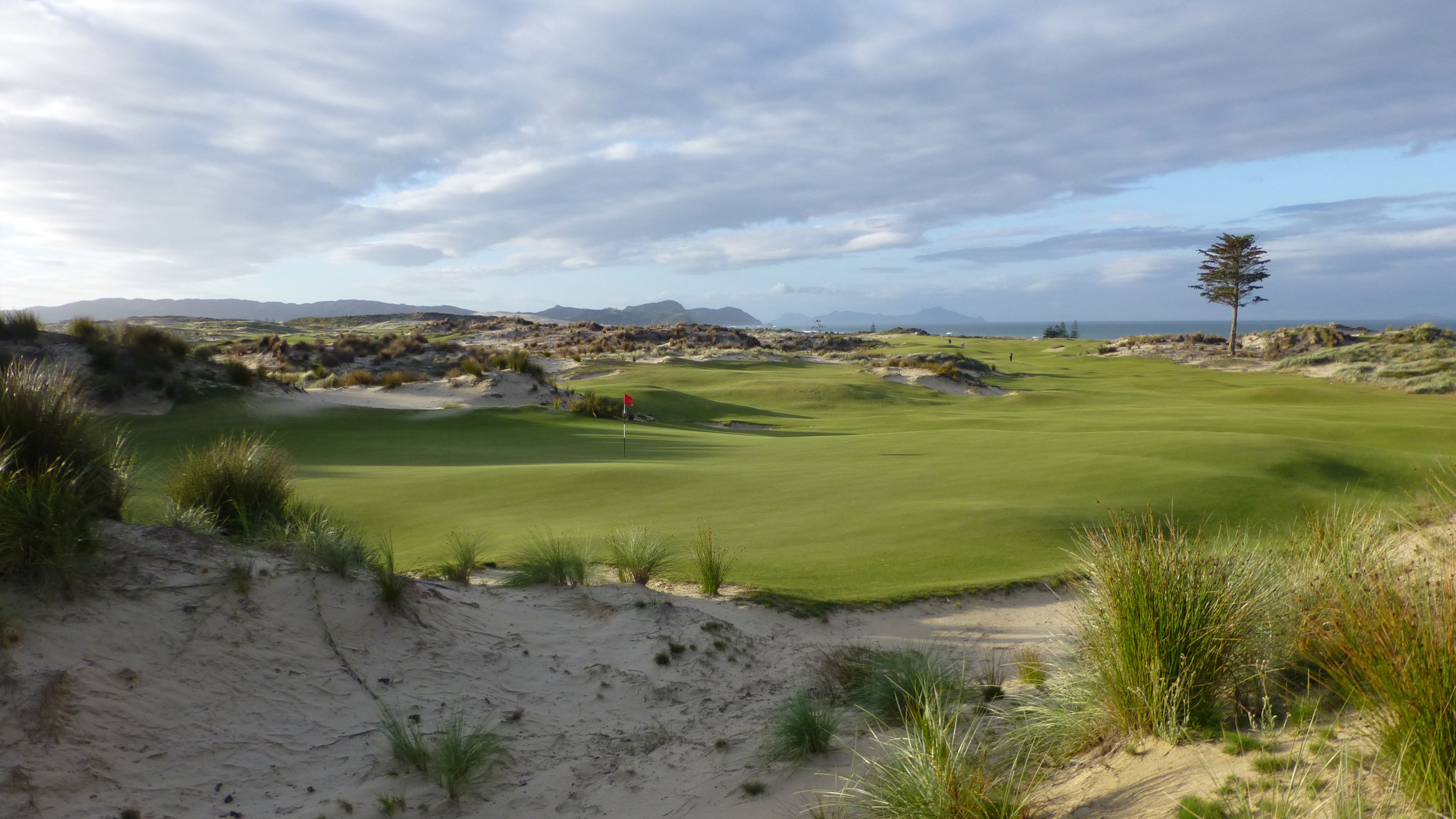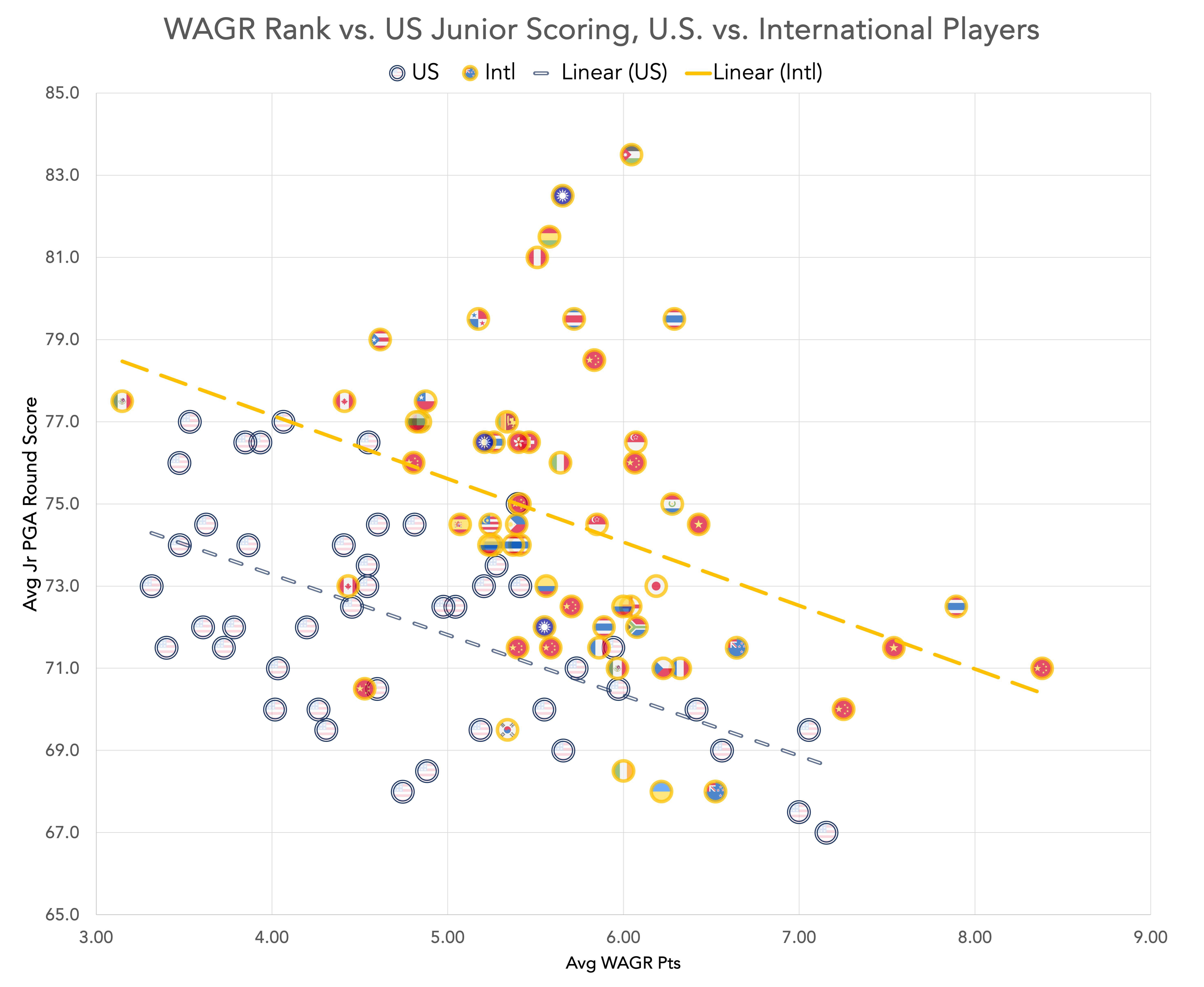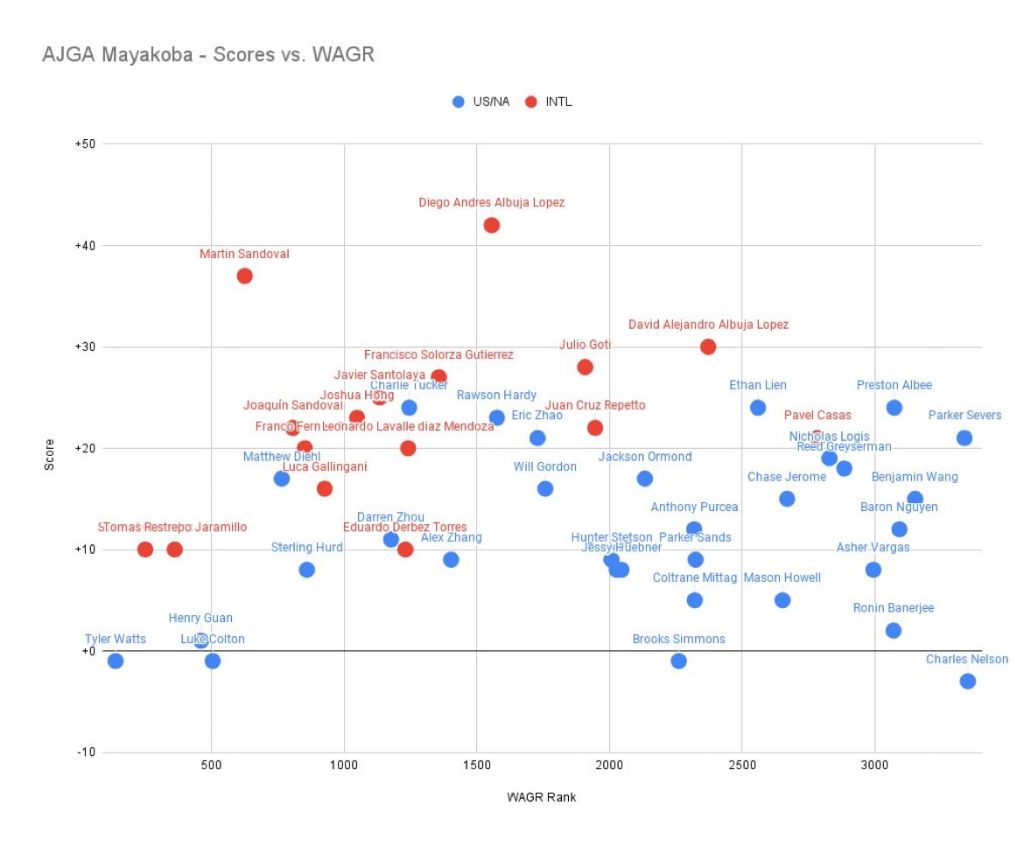
One of WAGR's purposes in its stated mission statement is "to provide a ranking system that enables players to compare with each other even though they may not directly compete against each other in events". In all honesty, this is a very noble objective and very difficult to pull off successfully. Especially with a points-based system.
It's difficult to evaluate how well a rankings system is performing if players stick to playing in their own silos. It's only when we have head-to-head competition between players from different geographies that we can evaluate whether the system evaluates and ranks players appropriately.
Thankfully, we had two big tournaments recently with a mix of American-based and International players: the U.S. Junior Amateur at Oakland Hills and the Junior PGA Championship at Congressional.
If you believe the WAGR is an accurate reflection of a player's performance and skill level and that WAGR is meeting its stated objective of allowing comparability across geographies, then you should see higher-ranked players outperforming lower-ranked players when they are on the same course the same week.
So let's first look at the U.S. Junior, where the top 100 WAGR-ranked players receive an exemption. Over 85% of those exemptions went to International players. In fact, only 13 of the top 64 WAGR-ranked players in the field were Americans. If WAGR was a decent representation of skill, you'd expect the match play to be filled and dominated by International players.
The chart below shows the average stroke play score relative a players WAGR points (average per event). The different trendlines show that there is a clear distinction between American and International players. For a given WAGR ranking, an International player shot 3.5-4 strokes higher per round at Oakland Hills. Collectively, the International players had an average WAGR of 505 and averaged 74.5 per round. The American players (ignoring those with 8 or less tournaments in their divisor) had an average WAGR of 1295 and averaged 72.2 per round. Despite the higher WAGR, 46 of the 64 players to make match play were American players.

A similar trend was observed at last week's Junior PGA. All else equal, an International player with a given WAGR rank would be expected to shoot 3-3.5 strokes higher per round than their American counterpart.

One could argue that this could be explained by American players having a home course advantage. That could be somewhat true, but it's safe to say the many American juniors have never faced a championship course quite like Oakland Hills. More importantly, here's a similar analysis from the AJGA Mayakoba Invitational from earlier this year which had a significant mix of American and Latin American players. Although this chart plotted WAGR rank rather than WAGR points, American players clearly outperformed their Latin American counterparts who were more likely to hold a home court advantage. 12 of the top 20 WAGR-ranked players entering the event were International players. The highest International finisher was T23.

Why This Matters
These three charts show that WAGR has a systematic bias against American-based junior players that causes them to be ranked lower than their skill level and performance would suggest. Even setting aside that this is likely adveresely impacting only ~40 American junior golfers from getting an exemption into the U.S. Junior (around half end up making it through qualifying), the bias creates broader issues across all of American junior golf. Take for instance a hypothetical junior tournament with just the 12 International players who played in the Junior PGA. And let's compare that to a standalone tournament with the 12 highest-ranked American players in the Junior PGA field.
Even if you ignore the obvious difference in scores (71.5 vs. 73.4) and assume take an extremely conservative view that, at worst, the American players have the same skill level of the International players, the International version of this tournament will receive 27% more points for the winner and every other place in the field compared to the American version of this tournament. The result is a 4th place finish in the International version of the tournament is equivalent to finishing 2nd in the U.S. version (importantly, this is what it would take to meet the 6.5-point threshold to become a ranked player. It's simply easier to become ranked as an International player)

The table below shows the same logic applied to a hypothetical tournament involving the highest 45-ranked International or American players from the U.S. Junior field. While both of these tournaments would be highly competitive, the International tournament would have a power ranking of 528 and the U.S. tournament would have a power ranking of 325.
Interestingly, we again see the same 27% difference in WAGR points assignment per finish position. Again, this is if you ignore the obvious two-stroke score difference between the two populations. In conclusion, it's safe to conclude that the WAGR of American juniors are being suppressed by AT LEAST 27%. Unfortunately there is no simple fix to WAGR that is going to fix this overnight (besides WAGR only likes to phase-in changes so the impact would only be fully felt after two years). The only immediate fix at the USGA's disposal is to bifurcate the U.S. Junior exemption criteria by extending invites to the top 50 American players and the top 50 non-American players. This seems like a simple and reasonable fix to provide more opportunities for elite American juniors to play in their national championship until a longer-term solution can be implemented.

Inspiring golfers to pursue this great game with drive and passion
Keywords
Related Posts

WAGR Files: WAGR Whac-A-Mole (Part III: U.S. Junior Exemption Impact)
2025 WAGR Changes may impact the exemption status of up to 30 Junior Golfers

WAGR Files: WAGR Whac-A-Mole (Part II: Staying Ranked)
How are the 998 Junior Golfers on WAGR impacted by the 2025 Changes?

WAGR Files: WAGR Whac-A-Mole (Part I: Getting Ranked)
A deep dive of 2025 WAGR changes shows it may have unintended consequences to US Juniors
Free E-mail Newsletter
Subscribe to the DRVN Golf Newsletter
DRVN Golf in your inbox, every month